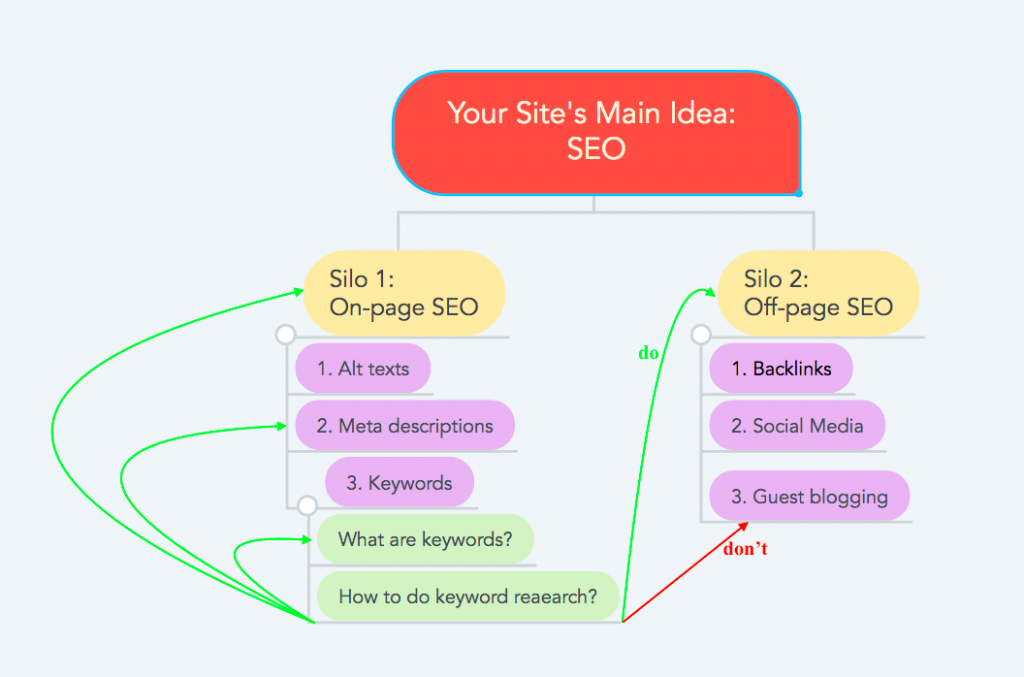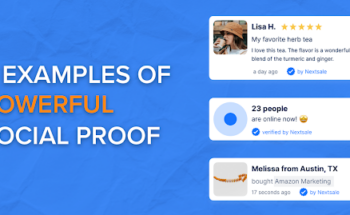
Did you know that with content silos structure you can rank higher on Google?
As you know, Google and other search engines pay attention to a website’s PageRank and how clear information is structured and distributed throughout the webpages. Content silos structure makes internal linking a lot easier and more organized, and it creates a much better user experience.
This post answer the following questions:
What are the content silos?
How do content silos help rank higher?
How to practice it?
How to do internal linking for silos?
What is the silo structure?
Content silo is a deep website architecture that is used to group relevant content to enhance a site navigation structure and SERP rankings.
The main purpose of content silos is to answer or cover the user queries and organize it in a way that search engines understand. (Source: BruceClay)
There are two types of silo structure: physical and virtual. Each option can enhance your site’s visibility to search engines. You might need to practice and figure out yourself which one suits you the best.
How content silos help SEO?
As you know from the previous article which was about dofollow and nofollow links, linking within your site passes link juice among the pages that help search engine bots to find them more easily. And, content silos require careful linking. While you practice it, you strengthen each keyword-based landing page of silos. So, these keyword-based top-level landing pages accumulate link equity as well as PageRank – the importance of the pages in the eyes of Google crawlers. This is mostly about how practicing virtual content siloing for SEO helps higher SERP rankings.
How to practice it?
Physical silos are created in the directory of a website. For physical siloing, you take the relevant topics – keyword-based pages and place them under a silo niche in your site’s directory. Virtual silos are formed through interlinked pages.
In general, to practice soloing, you separate your website content into categories. You take your website’s main idea and break it down to topics and subtopics; you do this until you come up with blog posts or page level ideas that answer user queries. Then, you group the most relevant topics, subtopics, and blog posts together under the proper silo.
Let’s say your eCommerce site – the main idea is about SEO. In each silo, you put one topic by dividing the SEO niche into topics:
- On-page SEO
- Off-page SEO
You got 2 top-level silo landing pages. The next step is to find subtopics for these silos, i.e., for on-page SEO, you create categories like alt texts, meta descriptions, keywords, etc.
After that, you find user queries for each page content – niche. These queries often contain LSI or simple keywords. For instance, take the “keywords” and write lots of content about this niche such as:
What are keywords?
How to do keyword research?
Why are keywords important? And more.
Your website’s silo structure will look like this:

So, to implement the content silos strategy for SEO, you need to cover every query to get the most from the content silo structure. You need to break down every silo into small categories and subcategories until every supporting page answers the relevant user queries. If you do this, you win traffic.
Internal linking for silo structure
Internal linking for silo structure is somehow different from other practices of inbound linking. Here, within each silo, you can link lower, same-level, and upper-level pages while the topics are similar and relevant. You can also create a link to another topic – silo’s landing page. As you can see from the image below, you point links to the similar pages within the relevant silos whereas you don’t cross-link among silos’ blog posts and categories, but you can lead to the top landing pages:

Creating links within silos strengthens the primary landing pages by giving importance to the keyword-based pages.
The URL structure (virtual siloing) for “on-page SEO” might look like this:
yourSEOsite.com/on-page-seo/meta-description
yourSEOsite.com/on-page-seo/alt-text
yourSEOsite.com/on-page-seo/keyword
When you plan to practice silo structure, you need to think ahead for internal linking, since every time you need to go back to the older topics and point links to the newer page posts.
Bottom Line
Silos are an excellent content structure to organize all information on your website neatly to rank higher in SERP. One drawback of content silos is that you need to do it carefully and follow every step. Virtual and physical siloing both are ideal for applying, but if you do them both, you win traffic. Next time I’ll be discussing how Google search works? Here, you can learn three stages of crawling, indexing, and serving the web. Stay updated!




